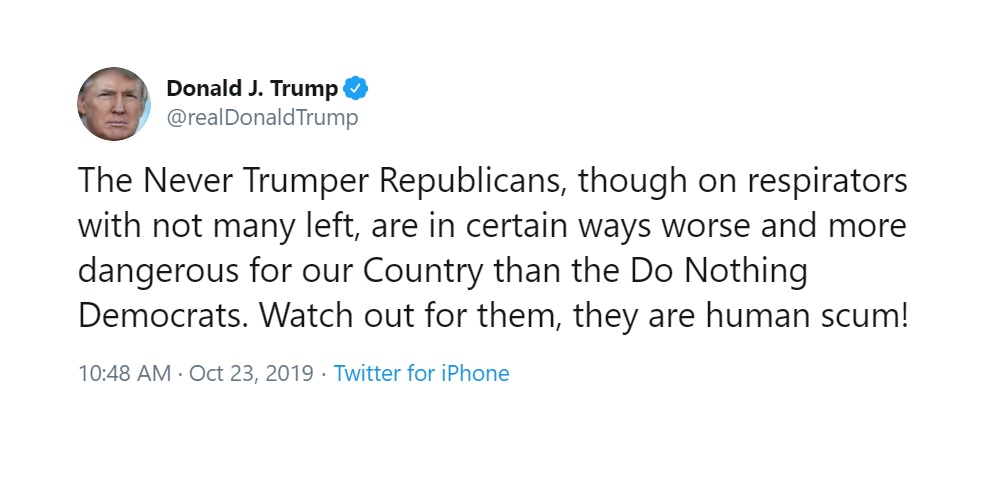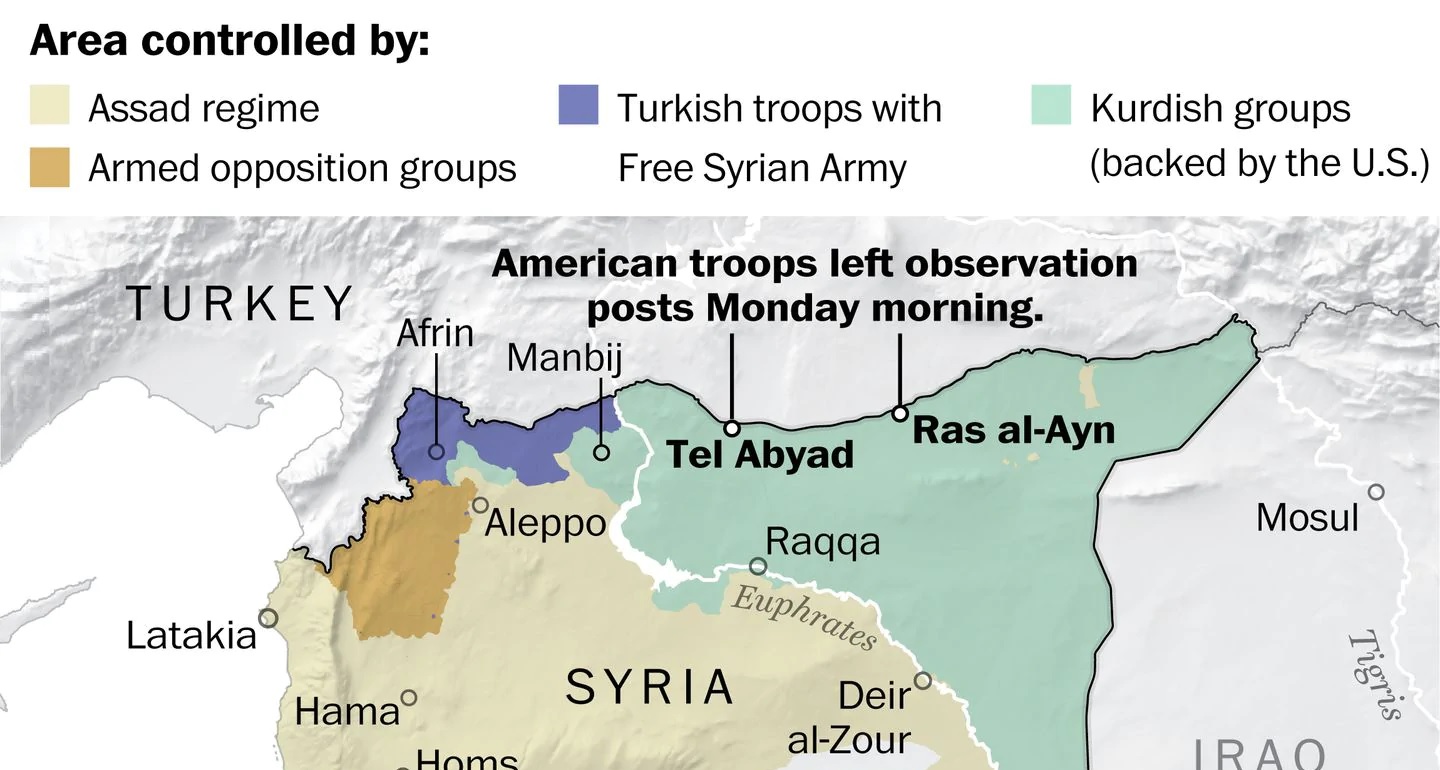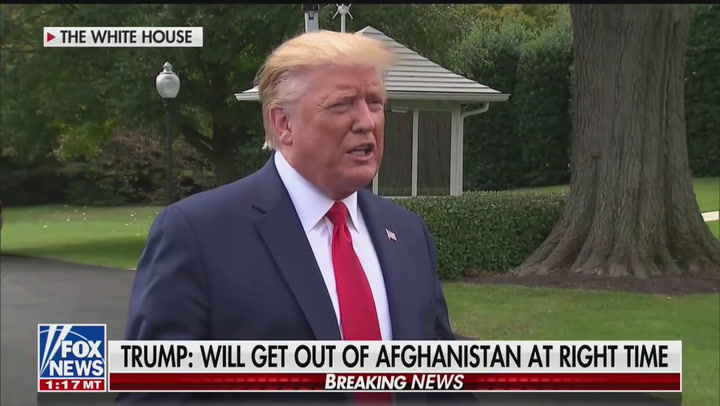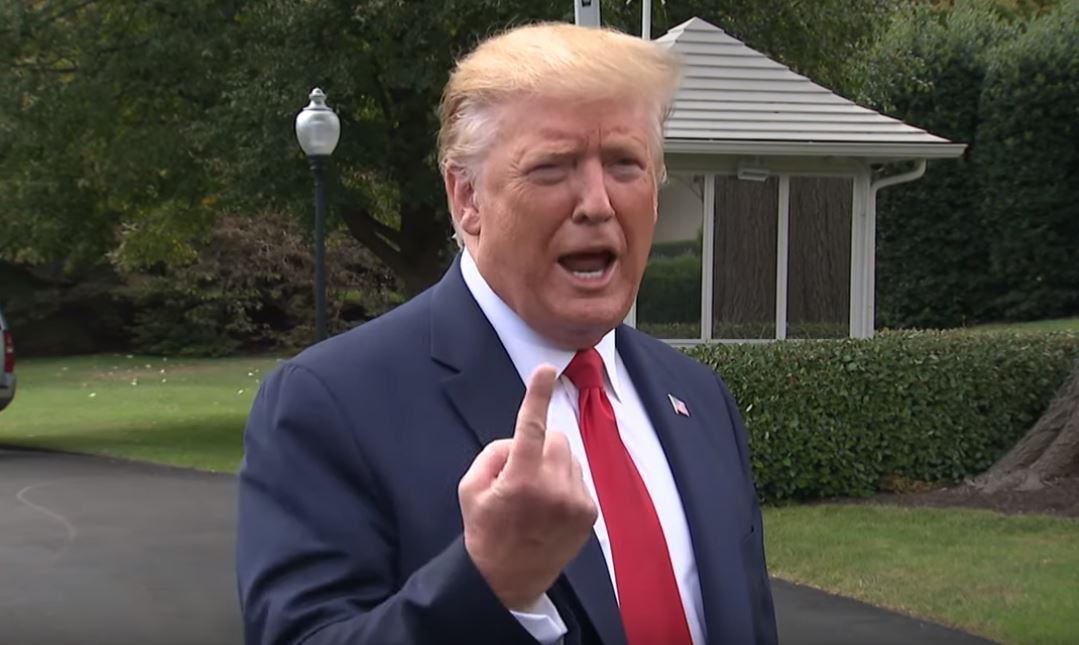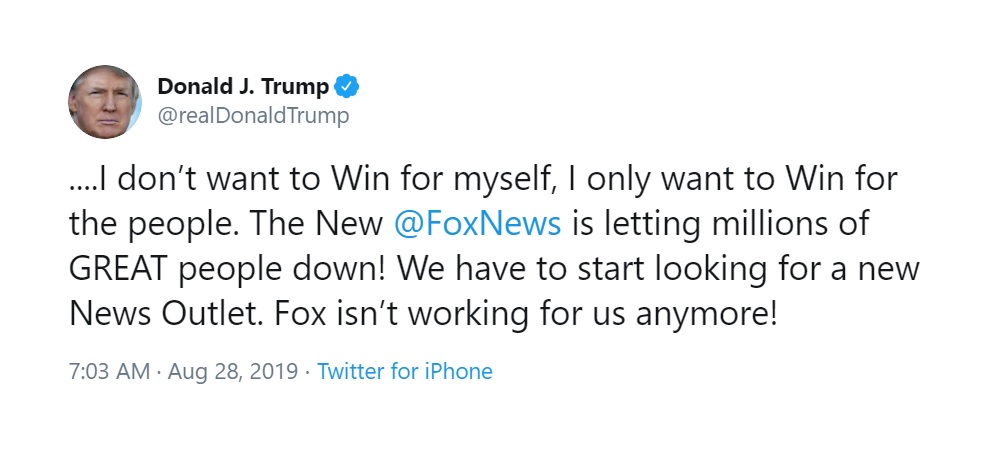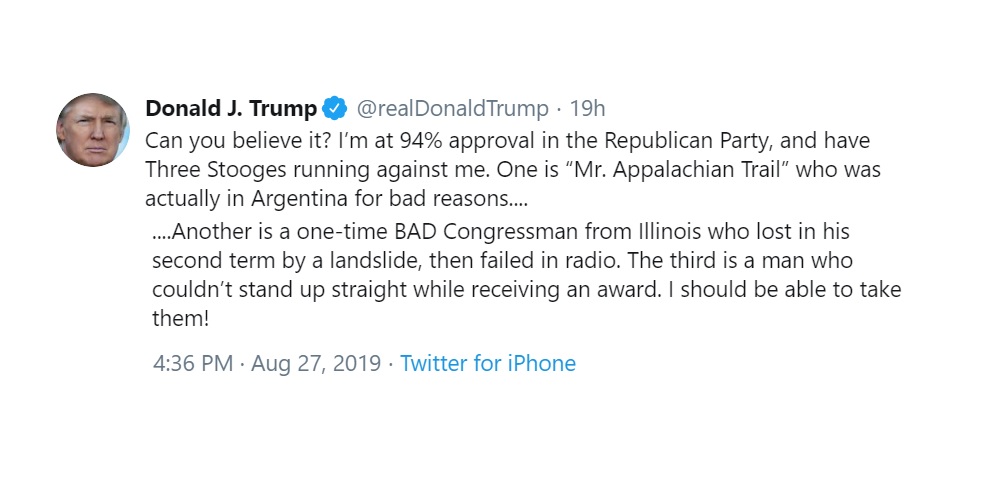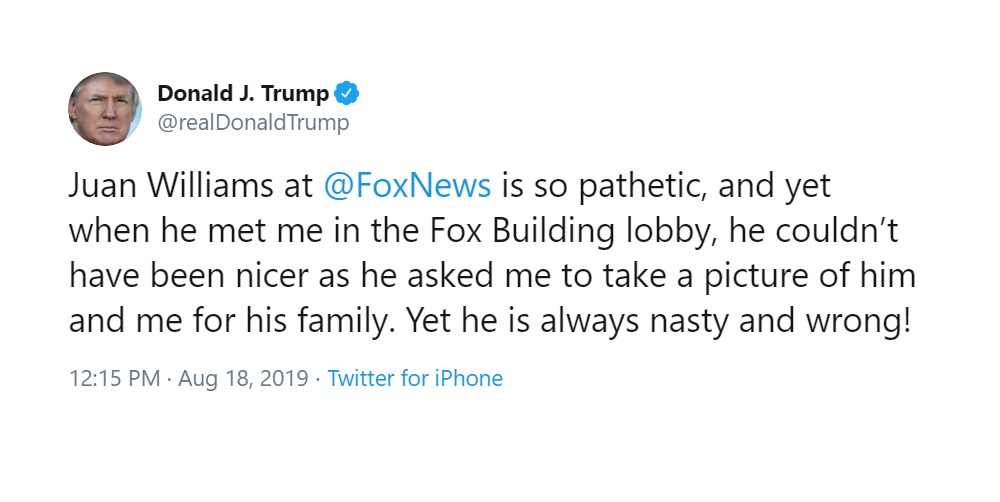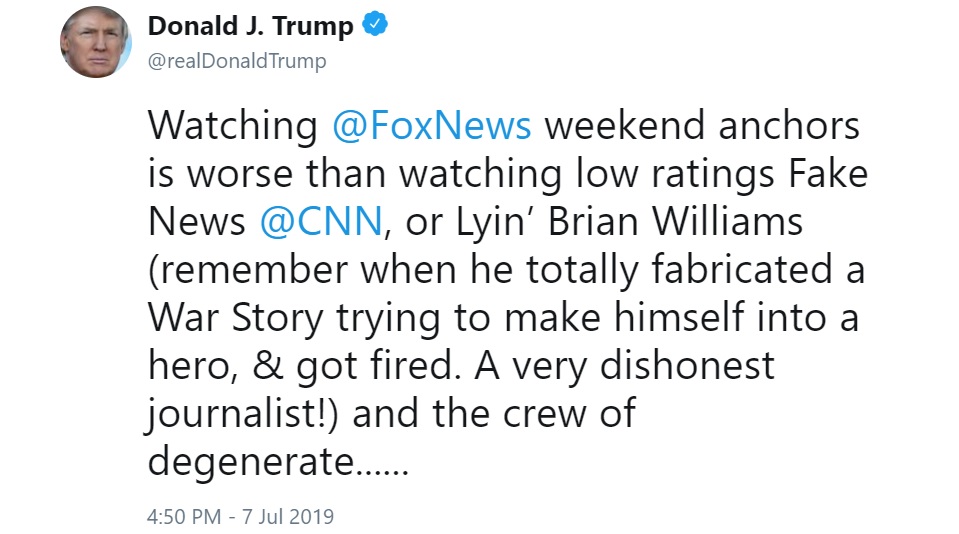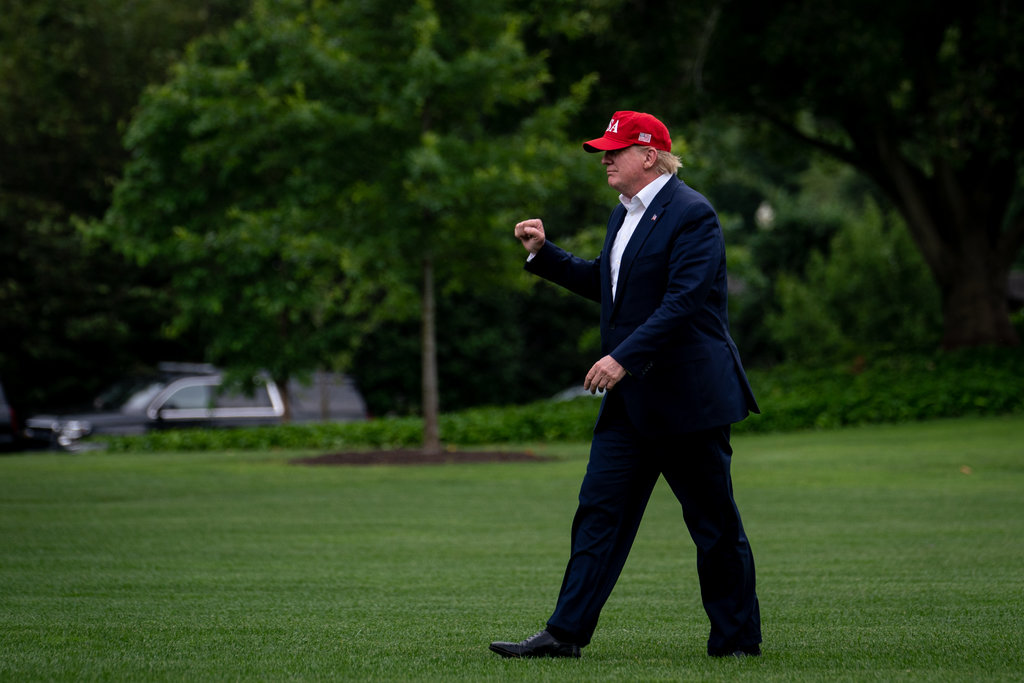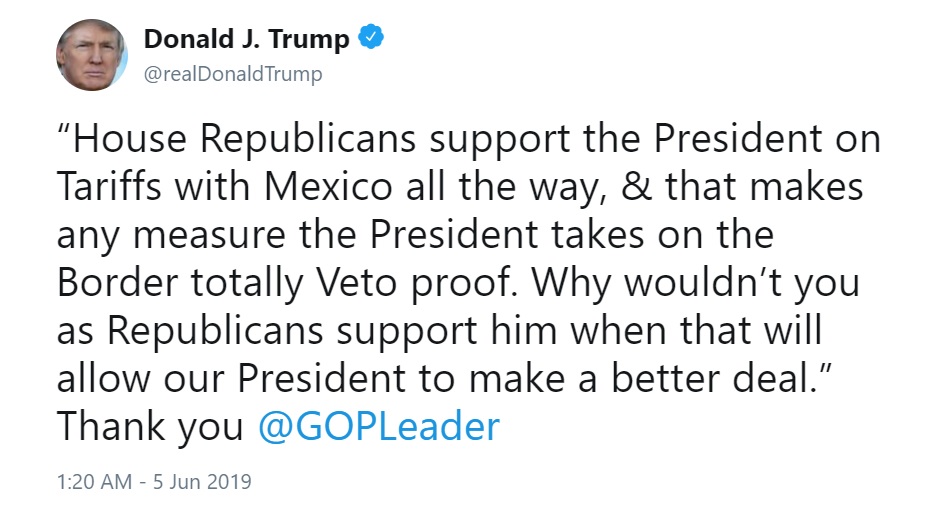The United States began withdrawing American troops from Syria’s border with Turkey early Monday, in the clearest sign yet that the Trump administration was washing its hands of an explosive situation between the Turkish military and U.S.-allied Kurdish fighters.
President Trump, in a series of Twitter messages Monday, suggested that the United States was shouldering too much of the burden — and the cost — of fighting the Islamic State. He rebuked European nations for not repatriating citizens who had joined the extremist group, claiming that the United States was being played for a “sucker.” And he chided his own Kurdish allies, who he said were “paid massive amounts of money and equipment” to fight the militants.
“It is time for us to get out of these ridiculous Endless Wars, many of them tribal, and bring our soldiers home. WE WILL FIGHT WHERE IT IS TO OUR BENEFIT, AND ONLY FIGHT TO WIN,” he tweeted.
Trump later added a warning to Turkey. “As I have stated strongly before, and just to reiterate, if Turkey does anything that I, in my great and unmatched wisdom, consider to be off limits, I will totally destroy and obliterate the Economy of Turkey (I’ve done before!),” he tweeted.
“They must, with Europe and others, watch over the captured ISIS fighters and families,” Trump continued. “The U.S. has done far more than anyone could have ever expected, including the capture of 100% of the ISIS Caliphate. It is time now for others in the region, some of great wealth, to protect their own territory. THE USA IS GREAT!”
The withdrawal followed a late Sunday statement by the White House that the United States would not intervene in a long-threatened Turkish offensive into northern Syria. The announcement, which signaled an abrupt end to a months-long American effort to broker peace between two important allies, came after a call between Trump and Turkish President Recep Tayyip Erdogan.
Erdogan said in a speech Monday that the withdrawal began soon after their phone call.
A U.S. official confirmed to The Washington Post that American troops left observation posts in the border villages of Tel Abyad and Ras al-Ayn at 6:30 a.m. local time.
In an initial reaction to the pullout, Sen. Lindsey O. Graham (R-S.C.), a strong Trump supporter, indicated on Twitter that he was seeking more information on the president’s decision. But he added, “If press reports are accurate this is a disaster in the making.”
The fast-moving developments threatened a fresh military conflagration in a large swath of northern Syria, stretching from east of the Euphrates River to the border with Iraq. Syrian Kurds had established an autonomous zone in the area during more than eight years of Syria’s civil war.
Ankara, however, has been increasingly unnerved by the Kurdish presence, and by the close ties between U.S.-allied Syrian Kurdish fighters and the Kurdistan Workers’ Party, or PKK, a militant group that has fought a long insurgency against the Turkish state.
For months, Erdogan has been threatening an imminent invasion, as Trump administration officials attempted to work out an accommodation that would satisfy Turkish demands for border security while providing a measure of protection for the U.S.-allied Syrian-Kurdish force.
But on Sunday, the United States appeared to throw up its hands. White House press secretary Stephanie Grisham said the Turkish leader would “soon be moving forward” with dispatching troops to battle the Kurdish forces, known as the Syrian Democratic Forces, or SDF. Ankara views the group as a terrorist-linked entity, but the SDF has fought closely alongside the U.S. military as a primary partner against the Islamic State.
“The United States armed forces will not support or be involved in the operation, and United States forces, having defeated the ISIS territorial ‘caliphate,’ will no longer be in the immediate area,” Grisham said in a statement. ISIS is another name for the Islamic State, the militant group whose rise drew the U.S. military into Syria.
The SDF, in a statement critical of the United States, said the American troops have begun pulling out.
“The United States forces have not fulfilled their obligations and withdrew their forces from the border area with Turkey,” the statement said. “This Turkish military operation in north and east Syria will have a big negative impact on our war against Daesh and will destroy all stability that was reached in the last few years.” Daesh is an Arabic acronym for the Islamic State.
It added that the group reserves the right to defend itself against Turkish aggression.
Erdogan, who has portrayed a Turkish incursion as necessary to protect his country’s borders, has spoken in recent weeks of resettling millions of Syrian refugees in Turkey in a “safe zone” in northern Syria, a plan that has been criticized by refugee advocates as well as local Syrian Kurds who could be displaced by such a proposal.
On Saturday, Erdogan said the invasion, dubbed Operation Peace Fountain, could begin “as soon as today or maybe tomorrow.”
U.S. officials depicted the impending offensive, and the U.S. troop withdrawal, as a dramatic turn after their prolonged attempt to hammer out an arrangement that would allay the Turks’ concerns about Syrian Kurdish forces close to their border, while also averting a battle they fear will be bloody for Kurdish fighters whom the Pentagon sees as stalwart allies.
Military officials point out that Kurdish assistance is still required to avoid a return of the Islamic State in Syria and to guard facilities where Islamic State militants and their families are being held.
A senior U.S. official, who spoke on the condition of anonymity to discuss an evolving situation, said the U.S. government “has no idea” what the Turkish operation would look like, whether it would be a small, symbolic incursion or a major offensive intended to push as far as 25 miles into Syria.
U.S. officials said an operation deep into Syria could further jeopardize the security of prisons holding Islamic State fighters. “There are many potential disastrous outcomes to this,” the official said.
The White House announcement comes only two days after the Pentagon completed its most recent joint patrol with Turkish forces, a central element of the U.S. effort to build trust in northern Syria. But similar patrols and other measures overseen from a joint U.S.-Turkish military hub in southern Turkey have not reduced Ankara’s impatience to establish the buffer zone it has envisioned.
Speaking to reporters on Friday, Defense Secretary Mark T. Esper described ongoing U.S.-Turkish cooperation in northern Syria, saying that his Turkish counterpart had agreed in a call last week “that we need to make the security mechanism work.”
In negotiations, the United States had said it would agree to a strip along the border to be cleared of Syrian Kurdish fighters and jointly patrolled by the United States and Turkey on the ground and in the air. That strip is about five miles wide, only about a quarter of what the Turks have demanded.
The joint patrols are taking place in only about a third of the border length, with the idea of gradually expanding them. In addition to not liking U.S. terms for the agreement, Erdogan believes the United States is dragging its feet in implementing it.
“Mr. Trump gave the order; he ordered to pull out. But this came late,” Erdogan told reporters in Ankara on Monday. “We cannot accept the threats of terrorist organizations.”
Erdogan’s plan to send up to 3 million Syrian refugees into the 140-mile-long strip also runs counter to what the United States says was part of the agreement they had reached to allow only the 700,000 to 800,000 refugees who originally fled the area to resettle there. Turkey currently hosts more than 3.6 million Syrian refugees, but the government has recently begun deporting hundreds back to Syria as public sentiment turns against the migrants.
Ibrahim Kalin, a spokesman for Erdogan, wrote on Twitter that Turkey has no interest in occupying or changing the demographics in northeastern Syria and that the “safe zone” would serve two purposes: secure Turkey’s borders and allow refugees to return home.
After months of warning about the turmoil such a move could create, U.S. officials said they are now watching Turkey’s actions closely to inform their own decisions about how quickly they must move the hundreds of troops expected to be affected.
“We’re going to get out of the way,” another U.S. official said.
There are about 1,000 U.S. troops in northeastern Syria.
The SDF also predicted that Islamic State fighters would break out of prison camps the SDF manages in different areas of Syria.
The potential for greater risk to Islamic State prisons and camps comes after months of unsuccessful efforts by the Trump administration to persuade countries in Europe and elsewhere to repatriate their citizens.
The White House statement said that “Turkey will now be responsible for all ISIS fighters” in that area. “The United States will not hold them for what could be many years and great cost to the United States taxpayer,” Grisham said.
Erdogan said Monday that Turkey has “an approach to this issue” of ISIS, without specifying what it was.
The United Nations is also concerned about the impact that any Turkish operation would have on the protection of civilians in northeastern Syria, Panos Moumtzis, U.N. regional humanitarian coordinator for Syria, said in a telephone interview.
“We want our message to all governments and actors on the ground to be to make sure that this latest development does not have an impact first of all on a new displacement of people,” he said.
The United Nations already provides services to approximately 700,000 people every month in the northeast. Moumtzis emphasized the importance of freedom of movement of civilians and ensuring the continuation of access to humanitarian groups. He stressed that any movement of Syrians must be done voluntarily and with safety and dignity.
“We have not had any specific instructions on” the safe zone, he said, adding that the United Nations has a contingency plan depending on how wide and deep the safe zone would be.
Turkey’s latest possible incursion comes nearly two years after Ankara launched a military offensive on Afrin, in northern Syria, in an operation that was also criticized as a distraction from the fight against the Islamic State.
The contested legacy of Turkey’s Afrin offensive has hovered over Erdogan’s latest military plans. Ankara has argued that its past foray into Syria brought stability to parts of the north and provided a safe haven for hundreds of thousands of Syrian refugees. But over the last year, human rights groups have documented abuses by Turkish-backed militias in Afrin — mistreatment that they say has included kidnappings and arbitrary detentions.
And many of the refugees who returned to Afrin — which has suffered from mysterious militant attacks, including car bombs — ended up fleeing back across the border into Turkey, according to advocates for the refugees.
Kurdish leaders have accused Turkey of trying to settle Arabs in historically Kurdish lands. Arab residents, in turn, have accused the Kurds of carrying out ethnic cleansing in areas they control.
“We thank the Americans for their decision to withdraw from northern Syria, not because we hate the U.S. but because we are fed up with the SDF,” said Abu Musafir, a member of the Manbij Tribal Council, a confederation of Arab tribes in the region.
“We are fed up with the SDF’s racism, detentions, kidnappings and compulsory conscription of underaged boys and girls,” he said. “The situation was bad, and the area was on the verge of imploding.”
[Washington Post]
